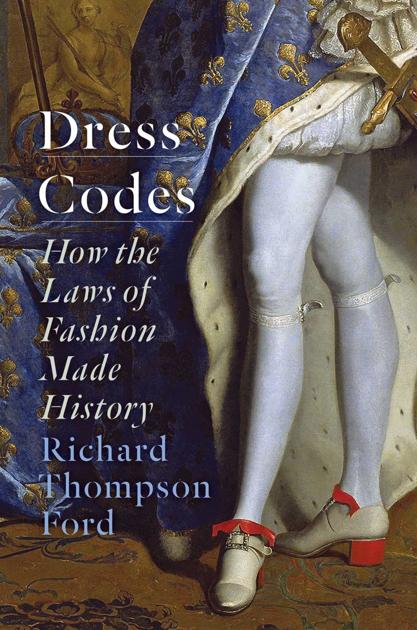
If a picture is worth 1,000 words, surely an outfit is worth 1,001.
At least that is what Richard Thompson Ford is telling us in his newest history offering, “Dress Codes: How the Laws of Fashion Made History.”
Ford is a lawyer and scholar (he is a professor at Stanford Law School) and spent much of his career researching, teaching and advocating for civil rights, a legal area where disputes about attire are very common.
At its core, “Dress Codes” is a book about the history of civil rights and its relation to attire.
Ford’s nearly-400-page tome covers an impressive scope of legal history related to the design, production, interpretation and use of clothing and dress.
“Dress Codes” is divided into five sections.
The first two are about western civilization from the Renaissance through the early 20th century.
The final three investigate and interpret the history of dress in African American culture, that of American women and, finally, people in the workplace.
Each section is filled with detailed and fascinating examples of dress codes established by different governments and institutions.
Many of these dress codes were meant to maintain the status quo of the time by relegating finer and fashionable attire (and the power to design and create it) to higher classes, particular groups of people and men.
It also identified certain fashions to be exclusively used by lower classes and groups.
According to Ford, “clothing is a status symbol, and the history is replete with rules and laws designed to ensure that the social status of individuals is reflected in what they wear.”
He identifies four main concerns that underlie all major historical and modern developments in fashion: status, sex, power and personality.
It is through legal means that different societies attempted (and continue) to control these four concerns of fashion through different dress codes.
As early as the 14th century, sumptuary laws outlawed clothing perceived to be too outrageous or offensive because it was apparently either a distraction from piety or, worse, “corrupting pleasure of the flesh.”
Sumptuary laws not only limited personal expression but also spoke to the power and status of clothing.
According to Ford, “conspicuous dress was seen as a kind of counterfeit, which threatened to undermine an economy of aristocratic and noble prerogative by cheapening its sartorial currency.”
In other instances, people were arrested or fined for not wearing the correct dress, such as when an early 15th-century Italian woman named Allegra was fined
10 ducats for appearing in public without earrings.
One would assume this was just a gendered transgression, but it was actually religious as well.
Allegra was Jewish, and local laws dictated that Jewish women wear “rings hanging from both ears … uncovered and visible to all.”
Here, the earrings are a symbol of status, sex and power (or lack thereof).
Ford’s style of writing is stuck in a liminal space between academic and popular history; thus, it reaches a wider audience than a traditional academic or popular history.
Some may find a few of his interpretive sections a bit long-winded, and others might find fault in the overwhelming number of examples and anecdotes he provides to justify his arguments, but those interested in legal history and fashion in general will find a lot to love in “Dress Codes.”
His examples are numerous but endlessly fascinating, both because of their extremity and outrageousness in the eyes of modern readers.
But like much of historical record, readers will also find a lot in common with the absurdity of history.
Perhaps not with the fashion faux-pas themselves, but the reasons behind why they were deemed an issue worthy of attention.
"book" - Google News
August 22, 2021 at 09:30PM
https://ift.tt/38iZjvv
Book review | The absurdity of fashion history | Books | news-gazette.com - Champaign/Urbana News-Gazette
"book" - Google News
https://ift.tt/2Yv0xQn
https://ift.tt/2zJxCxA
Bagikan Berita Ini















0 Response to "Book review | The absurdity of fashion history | Books | news-gazette.com - Champaign/Urbana News-Gazette"
Post a Comment